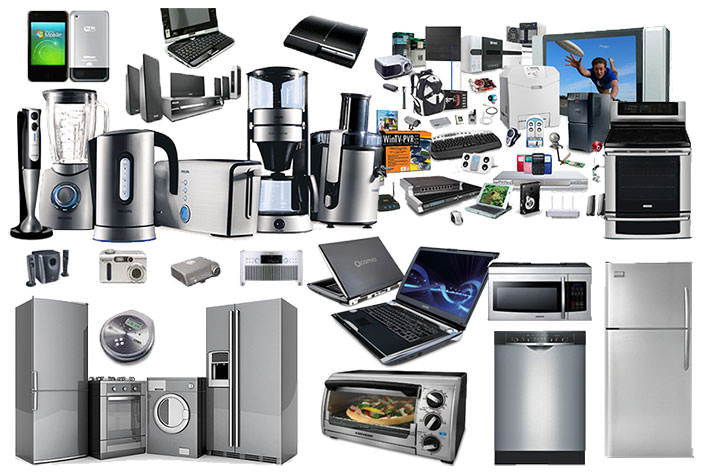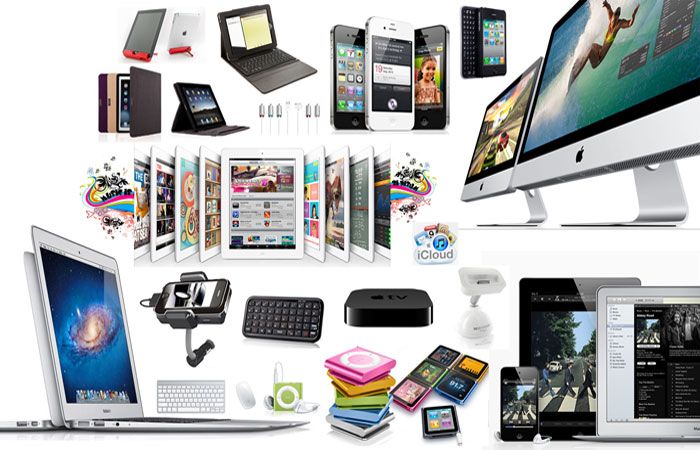Electronic Devices in 2020
Electronic Devices in 2020
Introduction
Computers and electronics play an enormous role in today's society, impacting everything from communication and medicine to science.
Although computers are typically viewed as a modern invention involving electronics, computing predates the use of electrical devices. The ancient abacus was perhaps the first digital computing device.
Analog computing dates back several millennia as primitive computing devices were used as early as the ancient Greeks and Romans, the most known complex of which being the Antikythera mechanism. Later devices such as the castle clock (1206), slide rule (c. 1624) and Babbage's Difference Engine (1822) are other examples of early mechanical analog computers.
The introduction of electric power in the 19th century led to the rise of electrical and hybrid electro-mechanical devices to carry out both digital (Hollerith punch-card machine) and analog (Bush’s differential analyzer) calculation.
The presentation of the Edison Effect in 1885 provided the theoretical background for electronic devices. Originally in the form of vacuum tubes, electronic components were rapidly integrated into electric devices, revolutionizing radio and later television.
It was in computers however, where the full impact of electronics was felt. Analog computers used to calculate ballistics were crucial to the outcome of World War II, and the Colossus and the ENIAC, the two earliest electronic digital computers, were developed during the war.
With the invention of solid-state electronics, the transistor and ultimately the integrated circuit, computers would become much smaller and eventually affordable for the average consumer. Today “computers” are present in nearly every aspect of everyday life, from watches to automobiles.
Definition
Electronics comprises the physics, engineering, technology and applications that deal with the emission, flow and control of electrons in vacuum and matter.
This distinguishes it from classical electrical engineering as it uses active devices to control electron flow by amplification and rectification rather than just using passive effects such as resistance, capacitance and inductance.
The identification of the electron in 1897, along with the subsequent invention of the vacuum tube which could amplify and rectify small electrical signals, inaugurated the field of electronics and the electron age.
This distinction started around 1906 with the invention by Lee De Forest of the triode, which made electrical amplification of weak radio signals and audio signals possible with a non-mechanical device. Until 1950, this field was called "radio technology" because its principal application was the design and theory of radio transmitters, receivers, and vacuum tubes.
The term "solid-state electronics" emerged after the first working transistor was invented by William Shockley, Walter Houser Brattain and John Bardeen at Bell Labs in 1947.
The MOSFET (MOS transistor) was later invented by Mohamed Atalla and Dawon Kahng at Bell Labs in 1959. The MOSFET was the first truly compact transistor that could be miniaturised and mass-produced for a wide range of uses, revolutionizing the electronics industry, and playing a central role in the microelectronics revolution and Digital Revolution.
The MOSFET has since become the basic element in most modern electronic equipment, and is the most widely used electronic device in the world.
Electronics is widely used in information processing, telecommunication, and signal processing. The ability of electronic devices to act as switches makes digital information-processing possible. Interconnection technologies such as circuit boards, electronics packaging technology, and other varied forms of communication infrastructure complete circuit functionality
and transform the mixed electronic components into a regular working system, called an electronic system; examples are computers or control systems. An electronic system may be a component of another engineered system or a standalone device.
As of 2019 most electronic devices use semiconductor components to perform electron control. Commonly, electronic devices contain circuitry consisting of active semiconductors supplemented with passive elements; such a circuit is described as an electronic circuit.
Electronics deals with electrical circuits that involve active electrical components such as vacuum tubes, transistors, diodes, integrated circuits, optoelectronics, and sensors, associated passive electrical components, and interconnection technologies. The nonlinear behaviour of active components and their ability to control electron flows makes amplification of weak signals possible.
The study of semiconductor devices and related technology is considered a branch of solid-state physics, whereas the design and construction of electronic circuits to solve practical problems come under electronics engineering. This article focuses on engineering aspects of electronics.
Electronic component
An electronic component is any physical entity in an electronic system used to affect the electrons or their associated fields in a manner consistent with the intended function of the electronic system.
Components are generally intended to be connected together, usually by being soldered to a printed circuit board (PCB), to create an electronic circuit with a particular function (for example an amplifier, radio receiver, or oscillator).
Components may be packaged singly, or in more complex groups as integrated circuits. Some common electronic components are capacitors, inductors, resistors, diodes, transistors, etc. Components are often categorized as active (e.g. transistors and thyristors) or passive (e.g. resistors, diodes, inductors and capacitors).
History
Vacuum tubes (Thermionic valves) were among the earliest electronic components.They were almost solely responsible for the electronics revolution of the first half of the twentieth century.
They allowed for vastly more complicated systems and gave us radio, television, phonographs, radar, long-distance telephony and much more. They played a leading role in the field of microwave and high power transmission as well as television receivers until the middle of the 1980s. Since that time, solid-state devices have all but completely taken over. Vacuum tubes are still used in some specialist applications such as high power RF amplifiers, cathode ray tubes, specialist audio equipment, guitar amplifiers and some microwave devices.
The first working point-contact transistor was invented by John Bardeen and Walter Houser Brattain at Bell Labs in 1947. In April 1955, the IBM 608 was the first IBM product to use transistor circuits without any vacuum tubes and is believed to be the first all-transistorized calculator to be manufactured for the commercial market.
The 608 contained more than 3,000 germanium transistors. Thomas J. Watson Jr. ordered all future IBM products to use transistors in their design. From that time on transistors were almost exclusively used for computer logic and peripherals. However, early junction transistors were relatively bulky devices that were difficult to manufacture on a mass-production basis, which limited them to a number of specialised applications.
The MOSFET (MOS transistor) was invented by Mohamed Atalla and Dawon Kahng at Bell Labs in 1959. The MOSFET was the first truly compact transistor that could be miniaturised and mass-produced for a wide range of uses.
Its advantages include high scalability, affordability, low power consumption, and high density. It revolutionized the electronics industry, becoming the most widely used electronic device in the world.
The MOSFET is the basic element in most modern electronic equipment, and has been central to the electronics revolution, the microelectronics revolution, and the Digital Revolution. The MOSFET has thus been credited as the birth of modern electronics,and possibly the most important invention in electronics.
Industry
The electronics industry consists of various sectors. The central driving force behind the entire electronics industry is the semiconductor industry sector,which has annual sales of over $481 billion as of 2018.The largest industry sector is e-commerce, which generated over $29 trillion in 2017.
More Detail on-





No comments:
Post a Comment